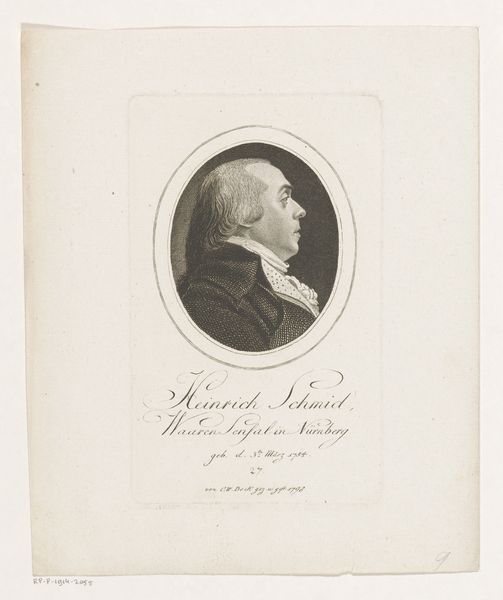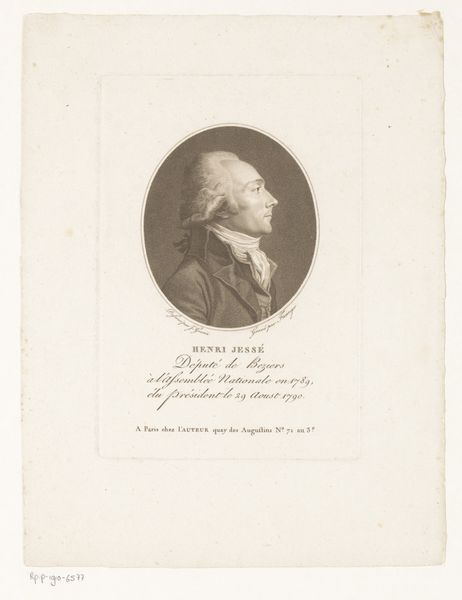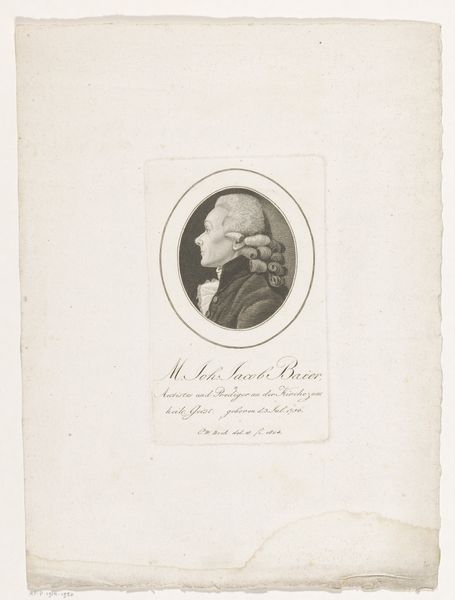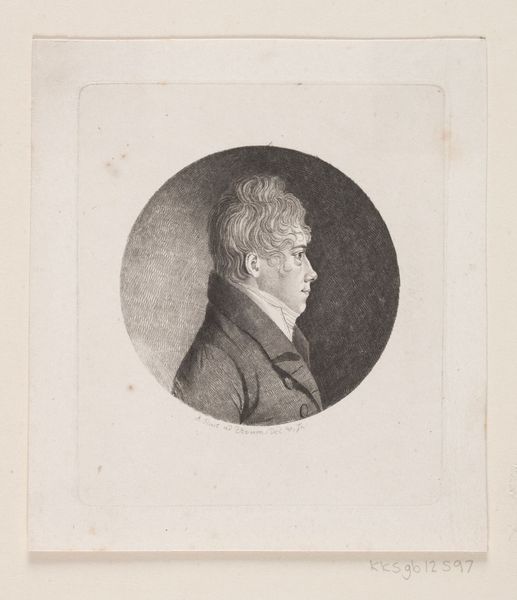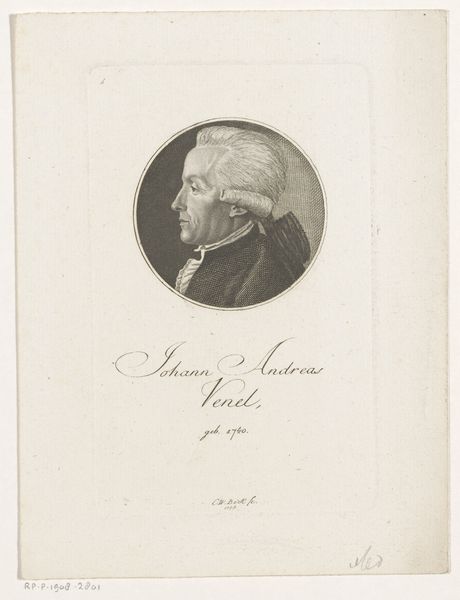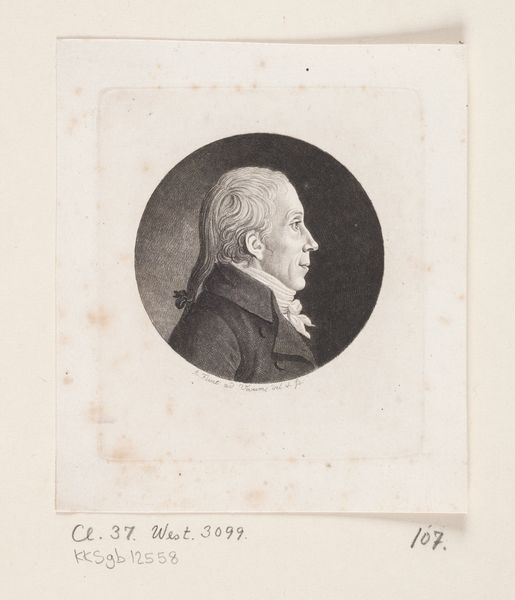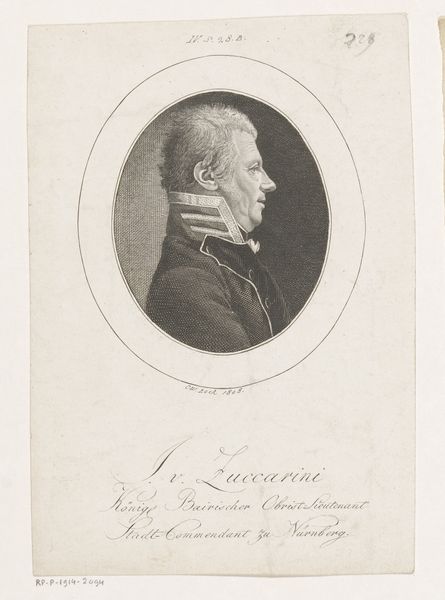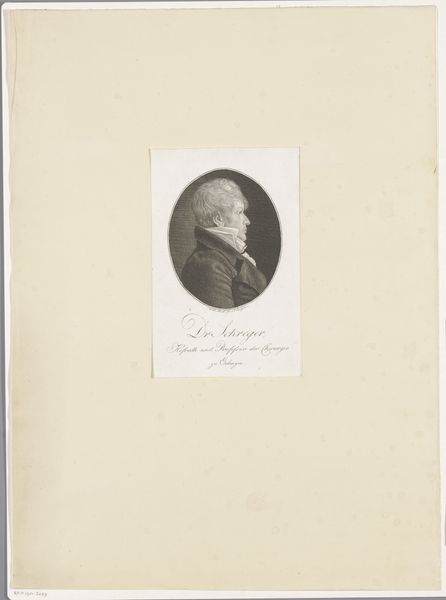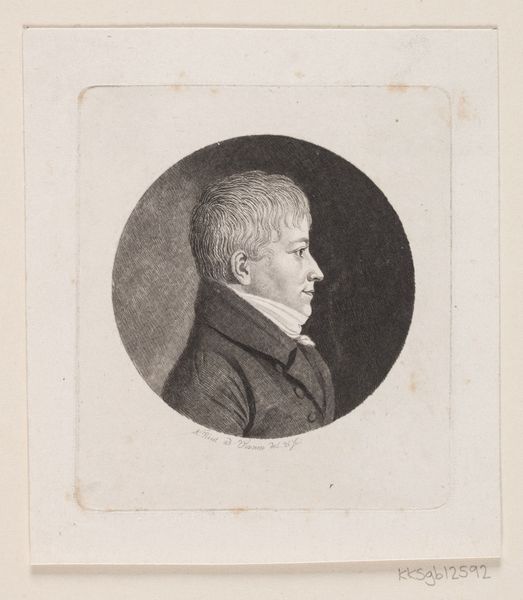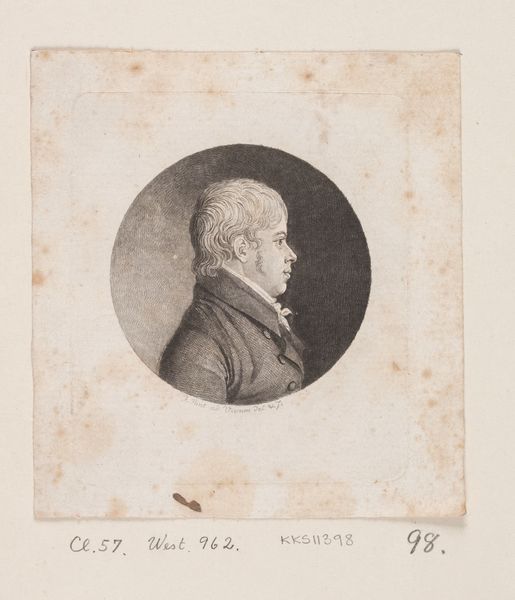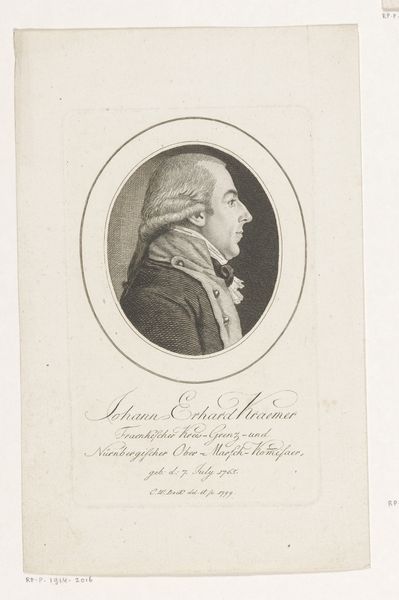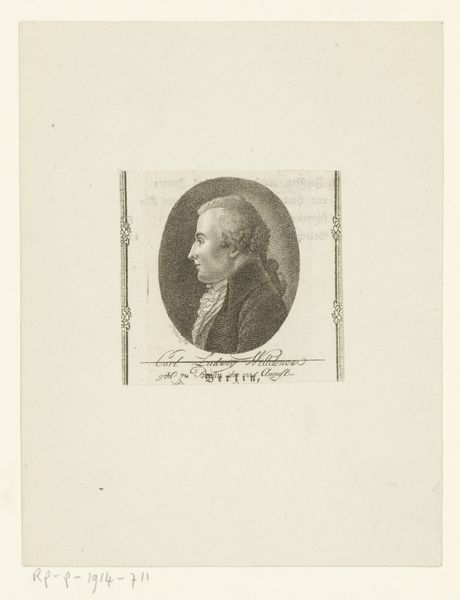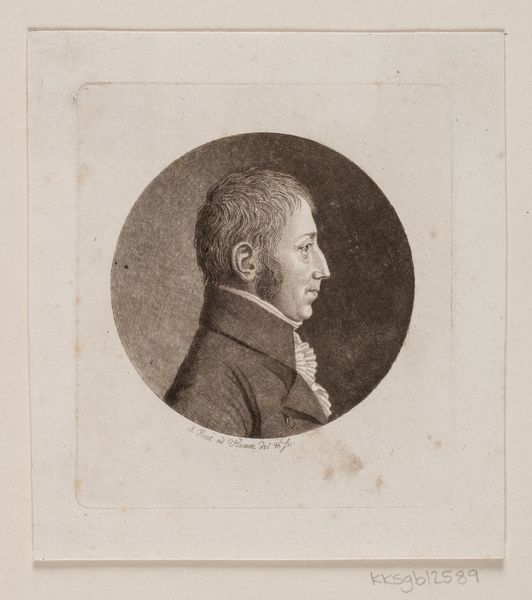
print, engraving
#
portrait
#
neoclacissism
# print
#
old engraving style
#
line
#
engraving
Dimensions: height 173 mm, width 110 mm
Copyright: Rijks Museum: Open Domain
Editor: This is the "Portret van J.P.J. Heidemann", an engraving made in 1807 by Christoph-Wilhelm Bock, currently held in the Rijksmuseum. It feels quite formal and restrained, with a real emphasis on line. What strikes you about this image? Curator: Immediately, I am drawn to the symbolic language embedded within its Neoclassical presentation. Look at the clean lines, the stark profile – these aren't just aesthetic choices. What emotional register does the figure's averted gaze evoke for you? Editor: I think it feels a bit distant and stoic. Maybe he is trying to portray an image of strong character. Curator: Precisely! The profile portrait, especially within the Neoclassical style, consciously recalls Roman portraiture, linking Heidemann with notions of virtue, civic duty, and intellectualism. Think about the connotations a circular frame has compared to, say, a square frame. Why choose that? Editor: A circle… suggesting completeness or perhaps even timelessness? Curator: Exactly! The artist, Bock, uses recognizable cultural symbols to communicate very specific ideas about identity and status. Note also the medium, engraving: it creates a sense of precision, a kind of... permanence. What might the choice of monochrome suggest about this figure? Editor: I never thought about how black and white suggests severity or starkness... It's very calculated in its effect, now that I see it! Curator: Indeed. Consider how these visual cues collectively contribute to constructing and solidifying social roles and memories across time. These visual tools continue to speak, often unconsciously. Editor: That's fascinating! It is more than just a portrait; it’s a constructed representation using symbolism everyone at the time would immediately grasp. Curator: And even now, knowing its visual language gives us insight into the past. Thank you.
Comments
No comments
Be the first to comment and join the conversation on the ultimate creative platform.
